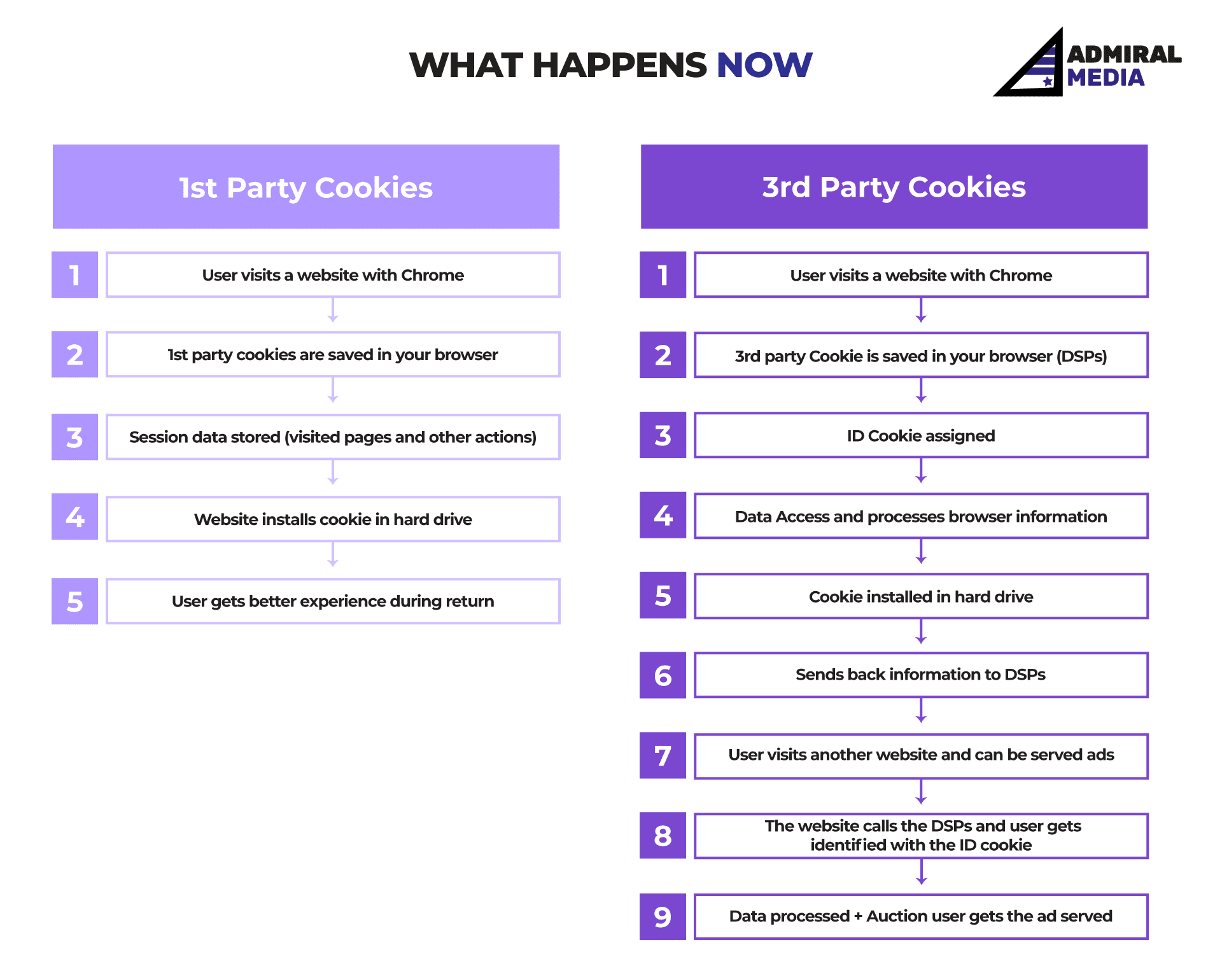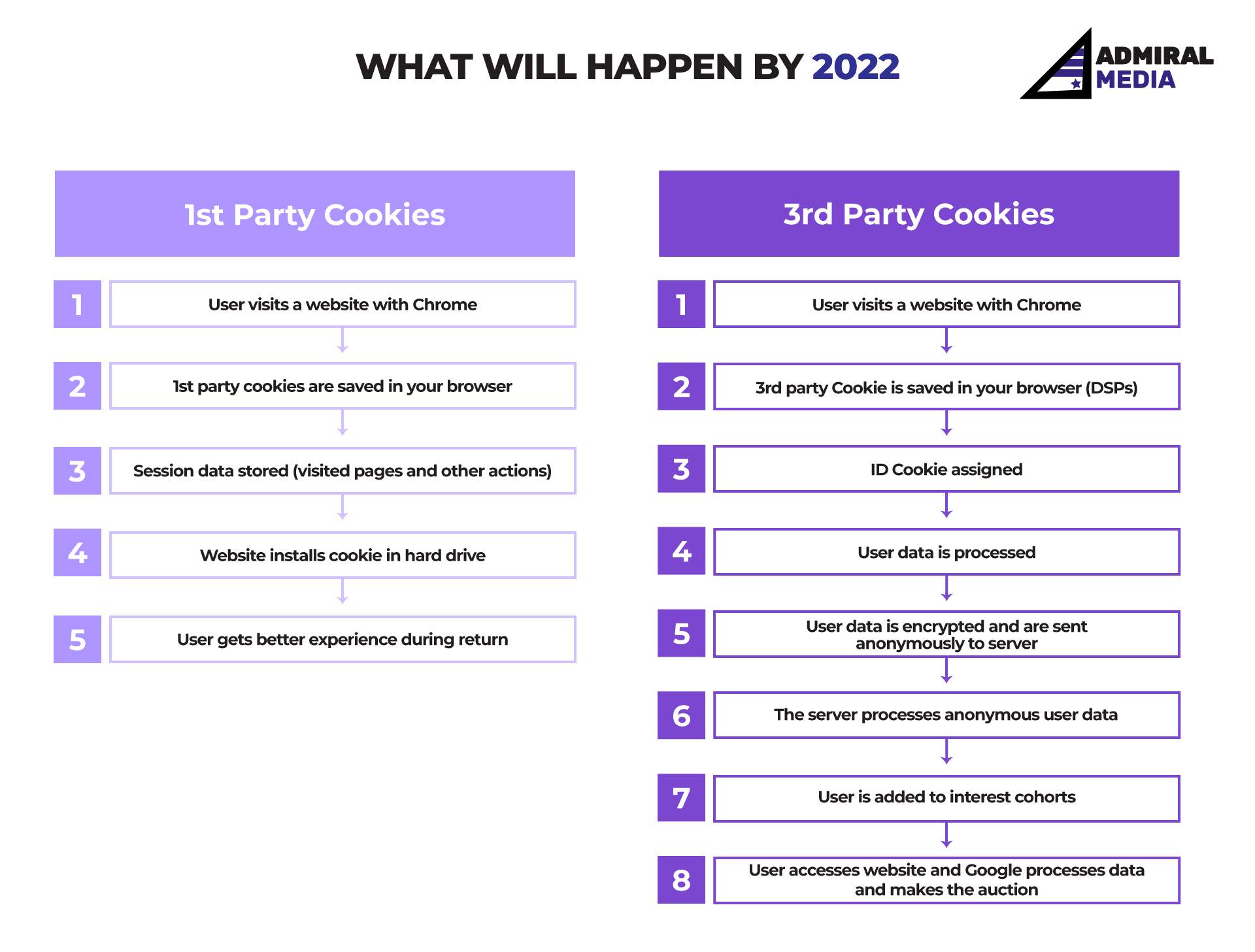Yes, digital marketers are going to experience another massive change in the industry. First, iOS14 and Apple’s SKAdnetwork. After that, Google wants to delete all 3rd party cookies from their Chrome browser by 2022. As if the first topic wasn’t enough, we get to have even more fun. Let’s see how Google changes your web tracking.
Table of Contents
1st party cookies and 3rd party cookies
Let’s check out what happens at the moment. Once a user visits a specific website when surfing the internet. First-party cookies track users on a specific website and record all their movements. These help us know what products users added to their carts. What products are the most interesting, or how many times do users leave without doing anything specific on the site? These cookies help website owners to improve the general user experience. In order to improve their overall conversion rate.
On the other side, we also have third-party cookies. Those are the ones that are going to disappear in the future, by 2022 on Google Chrome. Safari doesn’t have them anymore. These cookies come from different ad platforms or DSPs (Facebook, Twitter, for example). And they are installed inside users’ hard drives when they visit specific websites.
Those 3rd party cookies provide each user with an ID that has the ability to read quite a bit of the data recorded in your browser. Once installed it sends this information back to the DSPs. After that, if a user goes on a new website, the DSP matches the user with the corresponding ID cookie in order to show the different ads available at the best bids. 
The new process – elimination of 3rd party cookies
So, what is exactly going to change? Basically, Google will not allow 3rd party cookies anymore. Take into account that this is a big thing, because Google Chrome has tons and tons of users, and more importantly, knows how these users behave. Let’s go over the new process, after deleting all 3rd party cookies.
Google will have its own FLoC (Federated Learning of Cohorts) and will be tested in the US and some other selected countries (NOT in EEA countries), which is a new way of how browsers (more specifically Google Chrome by 2022) will show ads based on the behavior of a cohort of similar users, instead of having cookies from the different DSPs that analyzed the browser behavior of individual users on client-side.
UPDATE 25.03.2021: No FLoC for Europe
After some discussions with European politicians, Google will not test FLoC in Europe because of the uncertainty of what server will control the data and which one will create the cohorts, moreover, they are committed to the privacy Sandbox in this area. Even though Google does have in mind testing worldwide onwards. If you want to have a deeper understanding, check this other article.
In the first place, your browsers’ data will be accessed, processed, and encrypted before being sent to a server anonymously. A second refinement will be needed before the data is added to a cohort thanks to machine learning.
What it means
This means that when users access a specific website, nobody is going to start calling DSPs like the good old times, this time they will only have the chance to call Google (it is kind of sad having only 1 friend). This is only because Google will be the owner of this data.
Cookies will not exist and therefore, cookie IDs will not be able to be matched. Google will be the one processing users’ data this time and the next (and also offering the best bid).
To sum up, Google Chrome will offer higher privacy but ads will still be served as usual. The only question is if we still have ads showing everywhere, do we want personalized ads or random ads that are not interesting enough? 
Possible scenario
By 2022, when it’s no longer possible to match cookie IDs on Chrome, users will have more privacy and DSPs will not be able to recognize who the user is. So, instead of matching cookie IDs, users will be included inside interest-based cohorts in order to be served ads.
This will also bring up an issue for networks such as Facebook, Taboola, and so on. All the DSPs will have to create their own FLoC system in order to process data and try to profit from it, just like now. Unless they want to see their market value decrease and make Google even bigger. Do take into account that this already happened with Google’s announcement.
So once DSPs are forced to acquire user data, they will be knocking on users’ doors in order to get their leads. The question is how fast will they manage to adapt to the new environment and how will they ask users for their data this time. Maybe we will see websites saturated by pop-ups again or something similar to the actual cookies, who knows?
Effect on user experience
This will possibly have an effect on user experience for sure. But as a marketer, I would recommend users to give DSPs their email addresses in order to provide a better user experience on-site. I would also remind the users that advertising is not going to disappear. As long as they have a bit more privacy, educating them to be in the mood for a better experience when they are on the internet in order to see relevant ads.
On the other hand, to wrap this article up, once users provide their information, websites will also benefit from this. By being able to serve the best ads as possible for each user, in any other case, the user experience will be decreased. Luckily, 1st party cookies will still have an important role. Maybe websites will have to focus on this even more.





